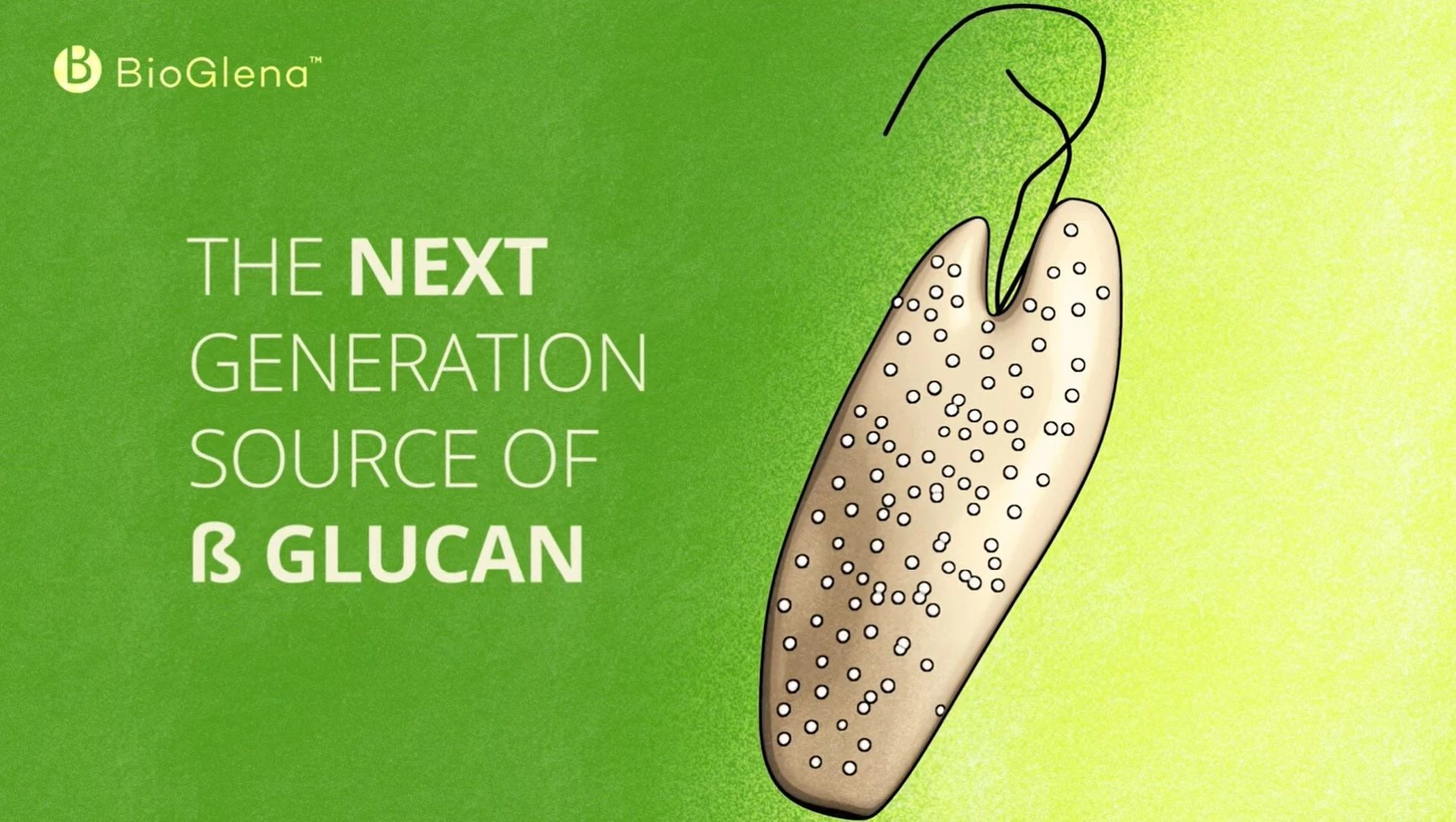Recently, Beneo introduced a new product, Orafti® β-Fit, a natural clean-label whole grain barley flour containing 20% barley-derived beta-glucans. This product, beneficial for heart health and blood sugar management, marks a significant expansion of the company’s functional fiber product line. It will be available globally and can be used in baking, cereals, meal replacements, and more.

In recent years, the diverse health benefits of beta-glucans are becoming increasingly well-known. Apart from barley, they can be extracted from oats, mushrooms, seaweed, yeast, sorghum, and other plants.
So, what are the applications of beta-glucans from different sources in the food industry? What are the future innovative directions?
Guardians of Life
Beta-Glucans are natural dietary fibers found in various natural plants and microorganisms such as grains, fungi, bacteria, and algae. Soluble beta-glucans have been proven to have many health benefits, including slowing down the passage of food through the intestines to maintain a longer feeling of fullness, slowing the absorption of sugar in the blood to help stabilize blood sugar levels, reducing the absorption of cholesterol in the digestive tract to maintain healthy blood cholesterol levels, and promoting heart health. Additionally, they have effects such as enhancing the immune system and reducing inflammation.
A report by Markets and Markets predicts that the global beta-glucan market size is expected to reach $501 million in 2023 and $734 million by 2028, with a compound annual growth rate of 7.9% from 2023 to 2028.

The main driving forces for this market can be summarized as follows:
Growth in demand for functional nutritional supplements
Urbanization and fast-paced lifestyles have led people to demand more efficient and precise nutritional supplements. Consumers are turning to functional foods and other dietary supplements to meet personalized nutritional needs. According to Research and Markets, the global functional food ingredients market is expected to reach $90.4 billion in 2022 and is projected to reach $161 billion by 2030, with a compound annual growth rate of 7.5% from 2022 to 2030, and a high compound annual growth rate of 10.3% in the Chinese market.
Plant-based ingredients leading consumer trends
The popularity of vegetarian culture, increased awareness of health, and concern for animal welfare are shifting consumer preferences towards organic, natural, and clean-label food and beverages. A report by Allied Market Research indicates that the global market size of plant-based food ingredients was $28.956 billion in 2020 and is expected to reach $123.414 billion by 2030, with a compound annual growth rate of 15.3% from 2020 to 2030.
Consumer demand is shifting from processed foods to health foods, functional foods, and superfoods. Consumers are more informed about their health and pay more attention to food ingredients. As a natural plant ingredient with multiple health benefits, the market demand for beta-glucans is expected to continue to grow.
Four Major Sources
Currently, beta-glucans consumed by humans are mainly derived from grains, yeast, mushrooms, and algae. Different sources, molecular weights, and structural characteristics directly affect their functional properties.
Grains Source
According to insights from Markets and Markets, beta-glucans from grain sources have significant advantages in technical quality, health value, and cost-effectiveness. It is expected to dominate the market share in the next five years.
Barley and oats have the highest beta-glucan content among grains, while wheat, rye, and rice bran have lower concentrations of beta-glucans. Beta-glucans from grains have a combination of β-1,3 glucosidic bonds and β-1,4 glucosidic bonds. Due to their unique structure, beta-glucans from grains can create viscosity in the intestines, resulting in various positive effects on health, including reducing postprandial blood sugar responses and improving blood cholesterol levels.
Lantmännen has introduced PromOat Beta-Glucan extracted from Swedish whole-grain oats. It is a high-concentration soluble oat bran fiber with minimal insoluble fiber, free from chemical substances. The traditional version of beta-glucans in PromOat is 34%, and the gluten-free version is 29%. As a functional ingredient, it has good solubility, high water-binding capacity, and emulsifying properties. It can thicken and stabilize soups, dairy products, condiments, and beverages, imparting a creamy texture.

The company also offers PromOat beta-glucan powder as a dietary supplement for consumers. Made from 100% Swedish oats with no additives, it can be mixed with any liquid in smoothies or porridge. It can also be sprinkled on yogurt, and a daily tablespoon (approximately 9g) is equivalent to an intake of 3g of beta-glucans.

Yeast Source
According to a report by Grand View Research, the global market size of yeast beta-glucans was $174.2 million in 2021, and it is expected to expand at a compound annual growth rate of 8.2% from 2022 to 2030.
Yeast beta-glucan is a functional polysaccharide derived from the cell wall of brewing yeast, mainly consisting of β-1,3-D-glucan as the main chain and β-1,6-D-glucan as the side chain. Yeast beta-glucan has functions such as enhancing immune activity, regulating lipid and blood sugar levels, repairing cells, and improving gut health. In 2011, the European Union approved yeast beta-glucan as a new food ingredient.
The German manufacturer Leiber has been focusing on innovative applications of brewer’s yeast since 1954. Their product, Yestimun®, is a natural beta-glucan extracted from the cell wall of brewer’s yeast. It is made from high-quality brewer’s yeast, barley, hops, and water. Yestimun® is a light beige fine spray-dried powder with no taste or odor. It can be widely used in various solid or liquid product formulations.

Mushroom Source
A report by Grand View Research shows that the global functional mushroom market size was $26.7 billion in 2021 and is expected to reach a compound annual growth rate of 10.8% from 2022 to 2030. Functional mushrooms, considered “superfoods,” are rich in various bioactive substances, including beta-glucans, polyphenols, vitamins, and minerals.
Beta-glucan components can be obtained from medicinal mushrooms such as maitake, shiitake, reishi, chaga, agaricus blazei, and Yunzhi. The structure of mushroom beta-glucans is mainly composed of β-1,3 glucosidic bonds, with some β-1,6 glucosidic bonds as side chains, exhibiting strong antioxidant activity. Beta-glucans in mushrooms, in synergy with other nutrients, contribute to regulating immune system function, blood sugar, and cholesterol levels, as well as protecting cardiovascular health.
Founded in 1992, Super Beta Glucan is dedicated to researching beta-glucans derived from medicinal mushrooms. The company uses organic cultivation to produce a variety of medicinal mushrooms, including Ganoderma lucidum, Agaricus blazei, Cordyceps sinensis, and Hericium erinaceus. They have developed a proprietary beta-glucan manufacturing process that retains over 120 times the beta-glucan polymers compared to traditional extraction methods using ethanol or hot water. This process eliminates unnecessary by-products produced during the natural growth of mushrooms, providing advantages such as high purification and stable properties. It can be applied to various categories, including food and beverages, dietary supplements, and animal nutrition.
The company has launched two products for consumers, including Mycelium PRO, a capsule containing extracts from 10 medicinal mushrooms, offering antioxidant and free radical protection to supplement energy, and Betamin, a liquid containing 350g of beta-glucans from 12 mushrooms, with no artificial additives, flavors, or preservatives, supporting energy supplementation, antioxidant, and anti-aging effects.

Algae Source
In recent years, with an increased understanding of the health attributes of algae and an increase in raw material production, the algae beta-glucan market has also seen growth opportunities.
Beta-glucans derived from algae can be divided into two categories: those extracted from seaweed, with β-1,3-D-glucan as the main chain and β-1,6-D-glucan as the side chain; those extracted from microalgae, composed of linear β-1,3-D-glucan. The main source is the Euglena, a single-celled microalga that naturally produces beta-glucans known as “naked algal starch.” These beta-glucans are stored in the cells in the form of floating particles, and they can be easily obtained without the need for solvents.
BioGlena™, launched by Algatech, is a 100% natural beta-glucan material derived from the Euglena microalga, containing at least 55% linear β-1,3-glucan, complete proteins, essential vitamins, and minerals. It can be applied to capsules, tablets, gummies, powders, and functional foods. BioGlena™ easily digests in the stomach, releasing beta-glucans from the algal matrix, which are absorbed by immune cells in the intestines and transported to critical areas in the body, helping naturally enhance immune system function.

In conclusion, against the backdrop of growing consumer demand for functional and health foods, beta-glucan components are expected to experience significant growth in the coming years. Industry participants should intensify research efforts, explore the differences in properties and functions of beta-glucans from different sources, processing methods, and application scenarios, and develop more natural, safe, and cost-effective production technologies.
Reference
[1] Beta-Glucan Market by Source, Application, and Region- Global Forecast to 2028, Markets and Markets
[2] Global Functional Food Ingredients Strategic Markets Report 2023, Research and Researc
[3] Plant-based Food Ingredients Market by Type, Application: Global Opportunity Analysis and Industry Forecast, 2021-2030, Allied Market Research
[4] Beta-Glucans of Cereals: Functional and Technological Properties, Nutrients
[5] Yeast Beta-glucan Market Size, Share & Trends Analysis Report By Application, By Region, And Segment Forecasts, 2022 – 2030, Grand View Research
[6] Functional Mushroom Market Size, Share & Trends Analysis Report By Product Type, By Application, By Region, And Segment Forecasts, 2022 – 2030, Grand View Research
[7] Edible Mushrooms and Beta-Glucans: Impact on Human Health, Nutrients



